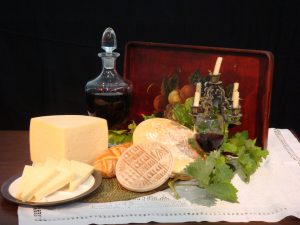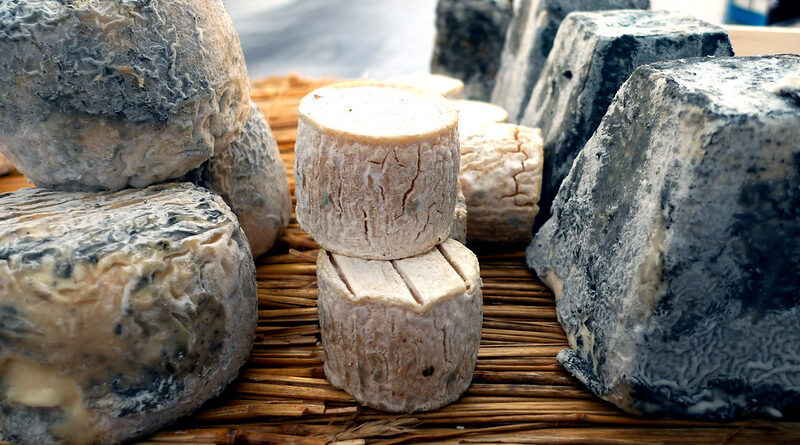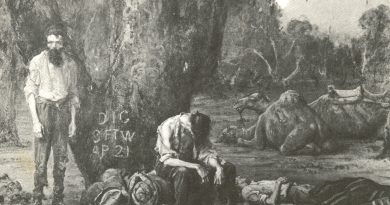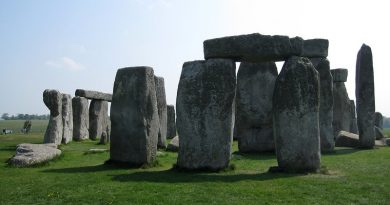The Story Of Cheese
Cheese is one of the most ubiquitous foods in the world, ever-present across the world. Its many different variants reflect the cultural and culinary identity of each corresponding country.
History
Cheese is one of the most ubiquitous foods in the world, ever-present across the world. Its many different variants reflect the cultural and culinary identity of each corresponding country. There are over 500 recognised types of cheese, each distinct from the other.
Cheese has a long and extensive history stretching back prior to recorded history. The earliest trace of cheese-making was found following excavations of Lake Neuchatel around 6000 BC. The earliest visual evidence dates back to 2000 BC as indicated by murals on Egyptian tombs.
Cheese-making was clearly common by the point of Hellenic civilisation. Many major Ancient Greek texts make mention of cheese as a common food item, most notably Homer’s ‘The Odyssey’.
The development of more common modern-day cheeses began in Europe during the end of the Middle Ages during the 16th Century. Cheddar was first historically noted in 1500 with parmesan following in 1597. This period saw cheese begin to diversify and shift to reflect each region’s cuisine and culture. Production increased significantly and the amount of cheeses skyrocketed. Despite this, cheese is generally less popular outside of non-European indigenous cuisine, although it has become popular since the advent of colonialism.
During the industrial revolution, cheese production methods modernised considerably with the first cheese-making factory opening in 1815 in Switzerland. Mass-production methods were popularised in the United States, which changed the process forever. This effectively democratised cheese, making it far more affordable and accessible to poorer people and less associated with the upper class.
How It’s Made
Cheese production varies depending on the particular type but there is a generalised process which applies to all variants. As a dairy product, cheese is derived from milk. Cow’s milk is the most popular and widely-used although sheep’s, buffalo’s and goat’s milk is also used for some major cheeses (such as feta or manchego).
 The cheese-making process includes a process called curdling, which sees acids added to the product such as vinegar, lemon juice or bacteria. This causes the milk sugars to become lactic acids. The milk is acidified into solid curds through the addition of this as well as rennet. This changes the cheese into a soft, moist gel. In the case of soft cheeses, the process is virtually complete. For the bulk of other cheeses there is more to be done.
The cheese-making process includes a process called curdling, which sees acids added to the product such as vinegar, lemon juice or bacteria. This causes the milk sugars to become lactic acids. The milk is acidified into solid curds through the addition of this as well as rennet. This changes the cheese into a soft, moist gel. In the case of soft cheeses, the process is virtually complete. For the bulk of other cheeses there is more to be done.
The curd is cut into small portions and the water drained from individual pieces. Hard cheeses are often then heated at a temperature between 35-55 degrees Celsius. Following this, each cheese is treated with a different flourish to give it its specific identity. For example, mozzarella is stretched.
Finally, the cheese is stored under controlled conditions and allowed to age to achieve its ripest flavour. This period ranges from a matter of days to a number of years.
Top French Cheeses
There is perhaps no other country where cheese is more important to its culinary and cultural identity than France. Former President Charles de Gaulle famously asked ‘How would you govern a country that has two hundred and forty-six varieties of cheese?’ Indeed, France is known for its immense breadth of cheese, most of which are strictly protected.
Brie
Arguably the most famous and popular of the French cheeses, brie is produced from cow’s milk with added rennet. It is served as a part of a circular wheel and is known its white mould rind, which is edible. It is often served alongside fruit.
Camembert
Very similar to Brie is Camembert. First produced in the eponymous Norman town at the end of the 18th Century, Camembert is highly popular both in France and abroad. It is known for its white mould rind, but has a softer, gooier texture than brie and a stronger flavour.
Roquefort
France is highly regarded for its wide variety of blue cheeses. However, Roquefort is probably the most well-known and popular of these. Dating back several hundreds of years, it is one of the most distinct cheeses in the world, known for its lack of rind, crumbly consistency, strong smell and highly tangy taste.
Boursin
One of France’s most distinct cheese, Boursin is one of many hailing from the Gournay region of Normandy. It is known for its soft, creamy texture and is often used as a spread, not dissimilar to cream cheese. It originated in 1957 and has since become highly popular, now available in a variety of different flavours.
Reblochon
 One of France’s most distinct cheeses, Rebolochon is made from raw cow’s milk and is notably unavailable in a number of countries, such as the United States due to its not being pasteurised. It is a soft, smear-ripened cheese known for its nutty taste and soft consistency. It is a major ingredient in the iconic Alpine dish Tartiflette.
One of France’s most distinct cheeses, Rebolochon is made from raw cow’s milk and is notably unavailable in a number of countries, such as the United States due to its not being pasteurised. It is a soft, smear-ripened cheese known for its nutty taste and soft consistency. It is a major ingredient in the iconic Alpine dish Tartiflette.
Top Spanish Cheeses
While its cheeses are perhaps less internationally known than those of France and Italy, Spain is one of the continent’s finest cheesemaking countries, known for its wide variety of products.
Manchego
Spain’s most iconic cheese is Manchego, made from sheep’s milk. Manchego is known for its lengthy ageing process, which takes a minimum of two months and often up to two years. The cheese is known for its firm consistency, creamy texture and mild taste. It is highly popular in the Americas, with a number of derivative cheeses existing there.
Arzua
Another major Spanish cheese, Arzua is made from cow’s milk both pasteurised and raw. It is known for its circular shape, thin rine and soft and creamy texture. It has a sweet flavour. It is made in the town of the same name in the Spanish region of Galicia.
Cabrales
Spain’s most well-known blue cheese, Cabrales is generally made from unpasteurised cow’s milk, but is sometimes mixed with sheep’s or goat’s milk as well. It is known for its strict artisanal manufacturaing process and is only available in the Asturias region. It has a strong, acidic flavour.
Mahon
 Originating from the island of Menorca on the Spanish Mediterranean coast and named for a natural port, Mahon is one of Spain’s most prestigious, versatile and sought-after cheeses. It is a distinct cheese which comes in both soft and hard forms. It has a sweet, salty and sharp taste and is known for its distinct orange rind, which is rubbed in a combination of butter, oil and paprika.
Originating from the island of Menorca on the Spanish Mediterranean coast and named for a natural port, Mahon is one of Spain’s most prestigious, versatile and sought-after cheeses. It is a distinct cheese which comes in both soft and hard forms. It has a sweet, salty and sharp taste and is known for its distinct orange rind, which is rubbed in a combination of butter, oil and paprika.
Top Italian Cheeses
Italy is one of the most prolific cheese producing countries in the world, the third largest behind France and Germany and has over 450 distinct varieties. Italy’s cheeses are known for being unique in character and incredibly popular overseas.
Mozzarella
Italy’s most iconic cheese, mozzarella is one of the most iconic soft cheeses in the world. Made from buffalo’s milk, mozzarella is known for it stretchiness, distinct white colour and mild taste. It is a very versatile cheese, used in a number of different ways, most commonly as part of the base for pizzas. Outside of Italy, cow’s milk is most commonly used.
Ricotta
Another distinct cheese, ricotta is a whey cheese made from the milk of a variety of different animals. It is made from the whey left over from cheese production. It has a creamy white texture and a slightly sweet taste. It has a number of culinary uses, being present in a number of Italian deserts as well as having savoury uses, such as a filling for ravioli or a pizza topping.
Parmesan
One of Italy’s most popular exports, parmesan or Parmigiano Reggiano as it is originally known is sometimes labelled the ‘King of Cheese’. Known for its hard texture, strong flavour and ubiquitous association with pasta dishes, parmesan is one of Italy’s many iconic dishes.
Pecorino
A hard cheese made from sheep’s milk, pecorino is one of Italy’s most popular cheeses. There are a number of different variants, the most notable of which being Pecorino Romano, which is a major food export. Pecorino is one of the country’s oldest cheeses, dating back to 2000 years ago. It is known for its crumbly texture and nutty flavour.
Gorgonzola
Italy’s most well-known variety of blue cheese, Gorgonzola is known for its strong and salty flavour while its texture varies from buttery to crumbly. It is a staple product of Northern Italy, mostly produced in the regions of Lombardy and Piedmont.
Top Greek Cheeses
Greece is one of the finest cheese-producing regions in the world. While there is some variety, their cheeses are generally fairly similar and have a unique character and can be eaten in a number of different contexts.
Feta
 Without a doubt Greece’s most popular and most-exported cheese, feta is a soft cheese generally made from sheep’s milk and sometimes in combination with goat’s milk. It is a brined curd cheese known for its crumbly texture and salty taste. It is most often used in salads or in pies such as the iconic Greek dish spanakopita.
Without a doubt Greece’s most popular and most-exported cheese, feta is a soft cheese generally made from sheep’s milk and sometimes in combination with goat’s milk. It is a brined curd cheese known for its crumbly texture and salty taste. It is most often used in salads or in pies such as the iconic Greek dish spanakopita.
Graviera
The country’s second-most popular cheese, Graviera is a hard cheese produced throughout the country. It is made from sheep’s milk and is known for its versatility. It is used in salads, for pasta dishes, fried or simply sliced and eaten plain.
Anthotyros
A fresh cheese made generally from goat’s milk but also from sheep’s milk, Anthotyros is known for its versatility, used in sweet and savoury dishes. It can be both soft and hard depending on its freshness.
Manouri
One of Greece’s most sought-after and specialist cheeses, Manouri is similar to feta but with a few distinct characteristics. It has a slightly sour smell and is far less salty than feta but also more creamy. It is mainly produced in Macedonia and Thessalia.
Boutique Cheeses of the UK
The United Kingdom is one of the most cheese-obsessed countries in the world. While it perhaps lacks the same extensive historical legacy of cheesemaking boasted by countries such as France and Italy, it boasts a number of boutique cheeses which have emerged into international prominence in recent decades.
Cornish Blue
One of Britain’s most famous blue cheeses, the Cornish Blue as its name indicates is made in the Southern English region of Cornwall. It has won many national and international cheese awards. It is distinct from other English blue cheeses, known for its mild, creamy flavour and a slightly sweet, buttery taste.
Stilton
 One of the most iconic English cheeses, Stilton comes in two varieties but is best known for its distinct blue variant. Dating back to the early 18th Century, Stilton is known for its distinct taste and strict manufacturing process.
One of the most iconic English cheeses, Stilton comes in two varieties but is best known for its distinct blue variant. Dating back to the early 18th Century, Stilton is known for its distinct taste and strict manufacturing process.
Lincolnshire Poacher
One of Britain’s finest boutique cheeses, the Lincolnshire Poacher is not dissimilar to cheddar and is known for its extensive maturing process, which can take up to two years. It has won a number of awards and is often smoked.
Cornish Yarg
One of the country’s most distinct cheeses, the Cornish Yarg is a fairly recent contribution to British cheesemaking, dating back to the 1980’s. It is a semi-hard cheese made from cow’s milk. It is known for its unique maturing process, wrapped in nettle leaves, which forms an edible rind.




